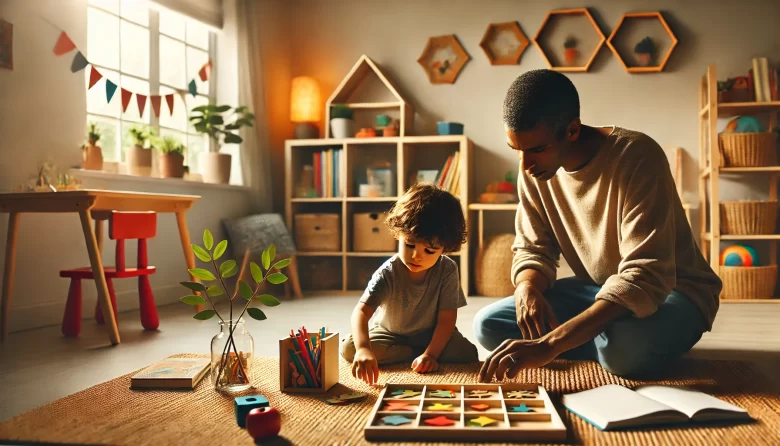Every child develops at their own pace, and parents often wonder when to start introducing structured activities at home. While free play is essential in early childhood, structured learning—activities with specific goals and guidance—can help children develop essential skills, such as focus, problem-solving, and independence.
So, what is the right age to begin structured activities? The answer depends on your child’s developmental stage, interests, and readiness. In this article, we will explore the best ages to introduce structured learning, the benefits of age-appropriate activities, and practical tips to make the transition smooth and enjoyable.
Understanding Structured vs. Unstructured Activities
Before determining the best age to introduce structured activities, it’s essential to understand the difference between structured and unstructured play.
Structured Activities
These are guided tasks with a specific purpose or learning goal, often led by an adult. They help children develop discipline, patience, and problem-solving skills.
Examples:
📖 Reading sessions with guided discussion
✂️ Arts and crafts projects with step-by-step instructions
🎲 Board games with rules to follow
🧩 Puzzles and building challenges
Unstructured Play
This type of play is open-ended, allowing children to explore, experiment, and use their imagination without a fixed outcome.
Examples:
🌳 Running and playing outdoors freely
🎭 Pretend play (e.g., acting out a story with toys)
🖍️ Drawing without instructions
🧸 Playing with dolls, cars, or action figures in creative ways
🎯 Pro Tip: A healthy balance of structured and unstructured activities is key to well-rounded development.
The Best Ages to Introduce Structured Activities
👶 1-2 Years Old: Gentle Introduction
At this stage, structured activities should be minimal and based on sensory experiences. The goal is to introduce routines rather than formal learning.
Best Activities:
✅ Stacking blocks to develop motor skills
✅ Singing nursery rhymes to enhance language development
✅ Looking at picture books together
✅ Playing simple peekaboo or “find the object” games
🎯 Pro Tip: Keep activities short (5-10 minutes) and follow your child’s interest.
🧒 3-4 Years Old: Early Learning Foundations
Preschoolers begin to enjoy more structured activities, but they still need plenty of playtime and movement. At this stage, learning should feel like play, not work.
Best Activities:
✅ Simple crafts with cutting and pasting
✅ Matching games with colors, shapes, or letters
✅ Storytime with interactive questions
✅ Movement-based games like Simon Says
🎯 Pro Tip: Use visuals, songs, and hands-on activities to keep engagement high.
👦 5-6 Years Old: Preparing for More Structure
By this age, many children can follow multi-step instructions and stay focused for longer periods. This is a great time to introduce more structured learning while still making it enjoyable.
Best Activities:
✅ Early writing and drawing exercises
✅ Science experiments (e.g., mixing baking soda and vinegar)
✅ Simple board games that require turn-taking
✅ Cooking or baking simple recipes with guidance
🎯 Pro Tip: Encourage independence by allowing children to make choices within structured activities (e.g., “Do you want to paint or do a puzzle?”).
👧 7+ Years Old: More Independent Learning
As children grow, they become more comfortable with structure and can handle more responsibility in their activities. At this stage, they benefit from guided learning that challenges their thinking.
Best Activities:
✅ Reading books and summarizing stories
✅ STEM-based projects (building with LEGO, coding apps, science experiments)
✅ Learning a musical instrument or a new language
✅ Journaling or writing short stories
🎯 Pro Tip: Encourage problem-solving by asking open-ended questions rather than giving direct answers.
How to Make Structured Activities Fun and Engaging
Even though structured activities are beneficial, they should never feel forced. Here are some ways to keep them enjoyable:
Follow Your Child’s Interests
Learning is most effective when children are excited about the topic. If your child loves dinosaurs, incorporate dinosaur puzzles, books, and themed crafts.
Keep Activities Short and Flexible
Young children have short attention spans. Start with 10-15 minutes and gradually extend the time as they grow.
Use Positive Reinforcement
Praise effort rather than results. Encourage perseverance by celebrating small achievements.
Combine Movement and Learning
Physical activity improves focus. Try learning games that involve jumping, clapping, or dancing.
Create a Routine, Not a Rigid Schedule
Structured activities work best when they are part of a daily rhythm rather than a strict schedule.
🎯 Pro Tip: Let children help plan activities—they will be more engaged if they feel involved in the decision-making.
Common Challenges and How to Overcome Them
“My child resists structured activities.”
✔️ Solution: Start with short, playful tasks and gradually increase structure. Make activities interactive rather than lecture-style.
“My child loses interest quickly.”
✔️ Solution: Use hands-on learning and switch between structured and unstructured activities.
“I don’t have time to plan activities.”
✔️ Solution: Use everyday moments (e.g., cooking, grocery shopping) as learning opportunities.
🎯 Pro Tip: Flexibility is key—adjust activities based on your child’s mood and energy level.
Final Thoughts
There is no single “perfect” age to start structured activities—it depends on your child’s personality, interests, and development. The most important thing is to introduce structure gradually, making sure that learning remains enjoyable and stress-free.
By blending structured and unstructured activities, parents can create a balanced learning environment that nurtures curiosity, creativity, and essential life skills




